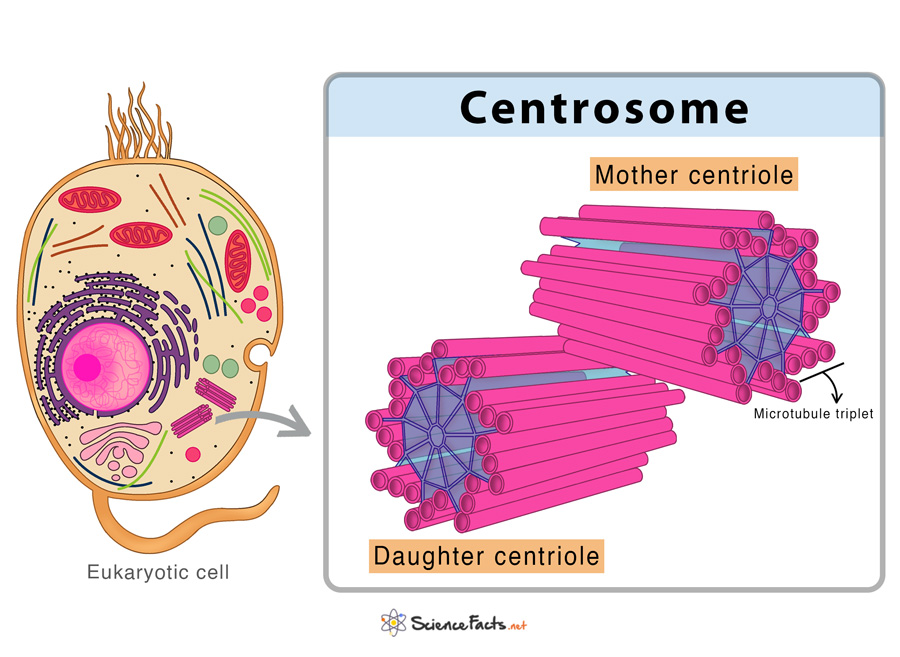Centrosome
What is Centrosome
The centrosome is described as the animal cell’s main microtubule-organizing center (MOTC). It comprises two centrioles surrounded by an electron-dense matrix called the pericentriolar material (PCM). The centrosome provides structure to the cell and plays a vital role in cell cycle progression.
It was discovered jointly by Walther Flemming in 1875 and Edouard Van Beneden in 1876 and later named and described in 1888 by Theodor Boveri.
Where is it Located
The centrosome is found in the cytoplasm outside the nucleus but often close to it. A single centriole is also found at the basal end of cilia and flagella. It is not present in all multicellular organisms (absent in plants) or each cell of a given organism. However, it is predominantly found in cells that function in cell movement.
Structure
It consists of a mother (or grandmother) and daughter centriole arranged right angles to each other and surrounded by a protein matrix, the PCM. The PCM contains more than 100 different proteins responsible for microtubule nucleation and anchoring, such as γ-tubulin, pericentrin, and ninein.
Each centriole of the centrosome consists of nine sets of short microtubule triplets (approximately 0.5 μm long and 0.2 μm wide) arranged in a cylinder with no central microtubules, called the 9 + 0 arrangement.
A cilium replaces the centrosome during cellular differentiation in many cell types. However, once the cell starts dividing, the cilium is replaced again by the centrosome.
Functions
The centrosome plays several crucial functions in animal cells.
Main Purpose
It is the major microtubule-organizing center in animal cells. The centrosome thus helps protein dimers to assemble into microtubules, forming the mitotic spindle in dividing cells. The spindle fibers coordinate cellular processes such as cell motility, signaling, adhesion, developing cell polarity, and coordination of protein trafficking.
The centrosome gets duplicated during the S phase of the cell cycle. Just prior to mitosis, the two centrosomes move apart until they reach the cell’s opposite poles. Microtubules arise from each centrosome, with their plus ends growing towards the metaphase plate, forming mitotic spindles.
Centrosomes also play other critical roles during cell division and cell signaling, apart from their role in spindle formation.
Role in Cell Division
- Changing the shape of the cell membrane, thus contracting the cell membrane and generating two cells by cytokinesis
- Arranging the chromosomes in the metaphase plate
- Ensuring the equal distribution of chromosomes between the two newly formed daughter cells
The centrosome also has links to other cell organelles such as the nucleus, the Golgi, cell-cell junctions, and actomyosin cytoskeleton that helps in positioning the centrosome within the cell and shape the microtubule cytoskeleton, and forming cell polarity.
Role in Cell Cycle Progression
- Activating cell signaling that allows cells to proceed to cytokinesis and the next round of the cycle
- Segregating signaling molecules such as mRNA so that they pass into one of the two daughter cells produced by mitosis
- Determining the position at which the axon will grow out in some developing neurons
-
References
Article was last reviewed on Friday, February 17, 2023




